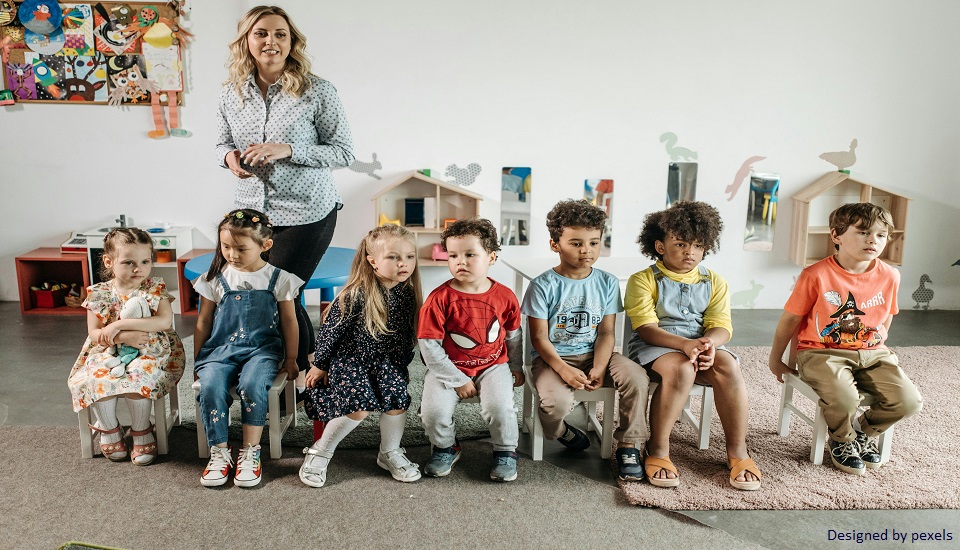Every nursery classroom is a colorful blend of cultures, languages, and experiences. But for young learners, stepping into such a diverse space can be exciting for some and overwhelming for others. As a teacher, your challenge - and incredible opportunity - is to turn this beautiful mix into a safe and supportive environment where every child feels valued and ready to thrive.
The secret? It lies in creating a culture of psychological safety.
When children know they are accepted just as they are, their confidence soars, their curiosity deepens, and they build connections that make learning joyful.
Why Psychological Safety Matters in a Nursery Classroom?
Children learn best when they feel safe. When they feel stressed or anxious, their brains find it harder to absorb new information. For children from diverse backgrounds, cultural differences can add to this stress. Creating a space where they feel comfortable can make all the difference.
Psychological safety:
- Reduces fear and builds confidence in children
- Encourages participation, even from shy or hesitant learners
- Fosters better relationships between children and teachers
Before you move to the topic, can we ask you a quick question? Do you follow us on Social Media? If not, then you’re missing out on a lot of informative content. We regularly share upgraded educational content, tips, feedback, and more. Check us out by clicking the profiles here – Facebook / Twitter / LinkedIn / Pinterest / Instagram / YouTube
Simple Steps to Build Safety in Your Classroom
How can nursery teachers create a safe and welcoming space for every child? The following strategies can help children feel comfortable, respected, and eager to learn.
1. Recognize and Respect Differences
Every child comes from a unique background. Some may be talkative, while others might prefer to observe before speaking. Recognizing these differences is the first step toward building trust.
- Learn about the cultures and traditions of your students.
- Include activities that celebrate diversity, such as sharing stories from different cultures.
- Use inclusive visuals in your classroom, like books and posters showing different cultures.
2. Create Clear and Kind Rules
Children thrive in structured environments. Setting clear expectations helps them feel secure.
- Explain classroom rules in simple words and display them for everybody to see.
- Use positive language. Instead of saying: Don't run. Say: Let's walk safely.
- Reinforce rules with fun reminders, like songs or visuals.
3. Encourage Open Communication
One of the impacts of psychological safety in training nursery kids is they understand that their thoughts matter. You can encourage them to share their ideas and feelings without fear.
- Start with circle time, where every child can speak if they want to.
- Use prompts like: How are you feeling today? Which part of the day did you enjoy the most?
- Pay attention to non-verbal cues. A quiet child might express themselves through art or play.
4. Use Inclusive Language
Take control of your language in the classroom because how we speak to children matters. Inclusive and kind language makes everyone feel welcome.
- Avoid comparing children to one another.
- To emphasize that differences are common, use phrases like: Everyone is unique and learns in their ways.
- Be mindful of cultural sensitivities when sharing stories or examples.
5. Build Trust through Feedback
Children need to feel that their efforts are seen and appreciated. Feedback should be kind and constructive.
- Celebrate small achievements with positive reinforcement, like stickers or a high-five.
- Avoid phrases: No, that is wrong. Instead, say: Let us try a different way.
- Use feedback as a way to encourage growth, not to highlight mistakes.
6. Promote Teamwork and Collaboration
Children learn a lot from working together. Group activities help them build friendships and feel supported.
- Pair children with different strengths so they can learn from each other.
- Use simple group activities like building blocks or creating a mural together.
- Encourage sharing and taking turns to teach cooperation.
7. Address Conflicts Calmly
Conflicts are natural in any group, especially with young children. How you handle them sets the tone for the classroom.
- Remain composed and give attention to each side of the story.
- Instead of reacting physically, teach children to use words like: I did not like that.
- Help them find solutions together, like sharing or taking turns.
8. Celebrate Progress, Big or Small
Recognition helps children feel proud of their efforts and motivates them to keep trying.
- Celebrate milestones, like learning a new word or completing a puzzle.
- Acknowledge unique strengths like creativity, kindness, or problem-solving skills.
- Create a classroom display to showcase their work and achievements.
Building a Growth-Oriented Classroom
A classroom that prioritizes psychological safety helps children grow academically, emotionally, and socially. Cheer them to see challenges as opportunities to learn.
- Teach them that mistakes are part of learning. Share examples of how even adults make mistakes.
- Praise their effort, not just the outcome. Say: You worked so hard on this drawing! - instead of focusing only on the result.
- Create a daily ritual where children reflect on what they learned and enjoyed.
Bottom Line
Psychological safety converts a nursery classroom into a place where every child feels valued, respected, and ready to learn. When you embrace diversity, foster open communication, celebrate progress, and join appropriate nursery teacher training courses, you help little learners thrive endlessly.
We believe education should be accessible to everyone. That’s why we don’t charge for our blogs. Find the right course that will help you in your career with us, contact us at - 1800–212–6400. You can mail us at act@asiancollegeofteachers.com.
Written By : Varsha















